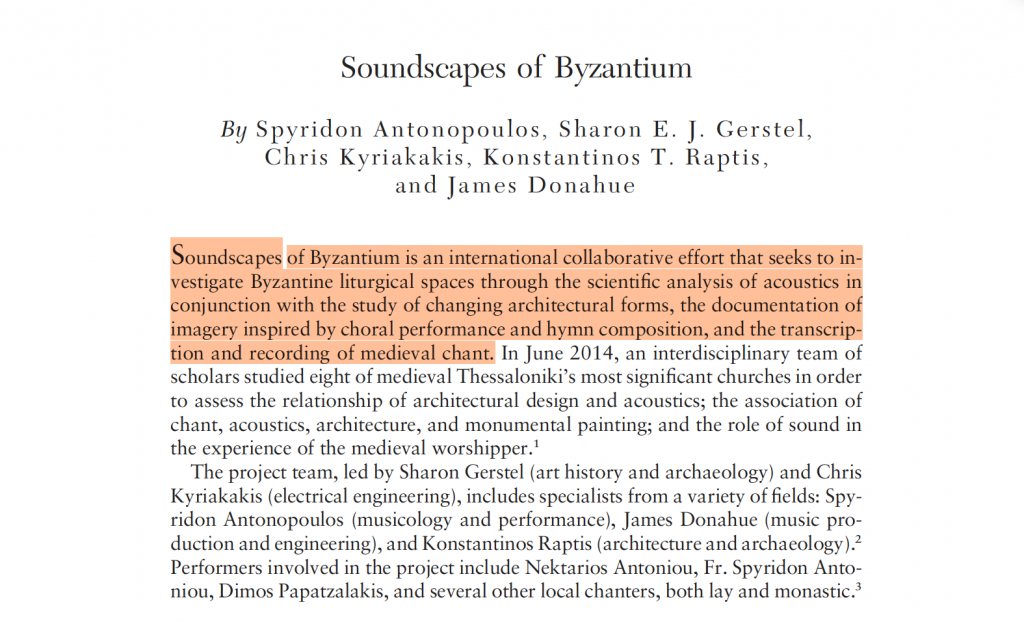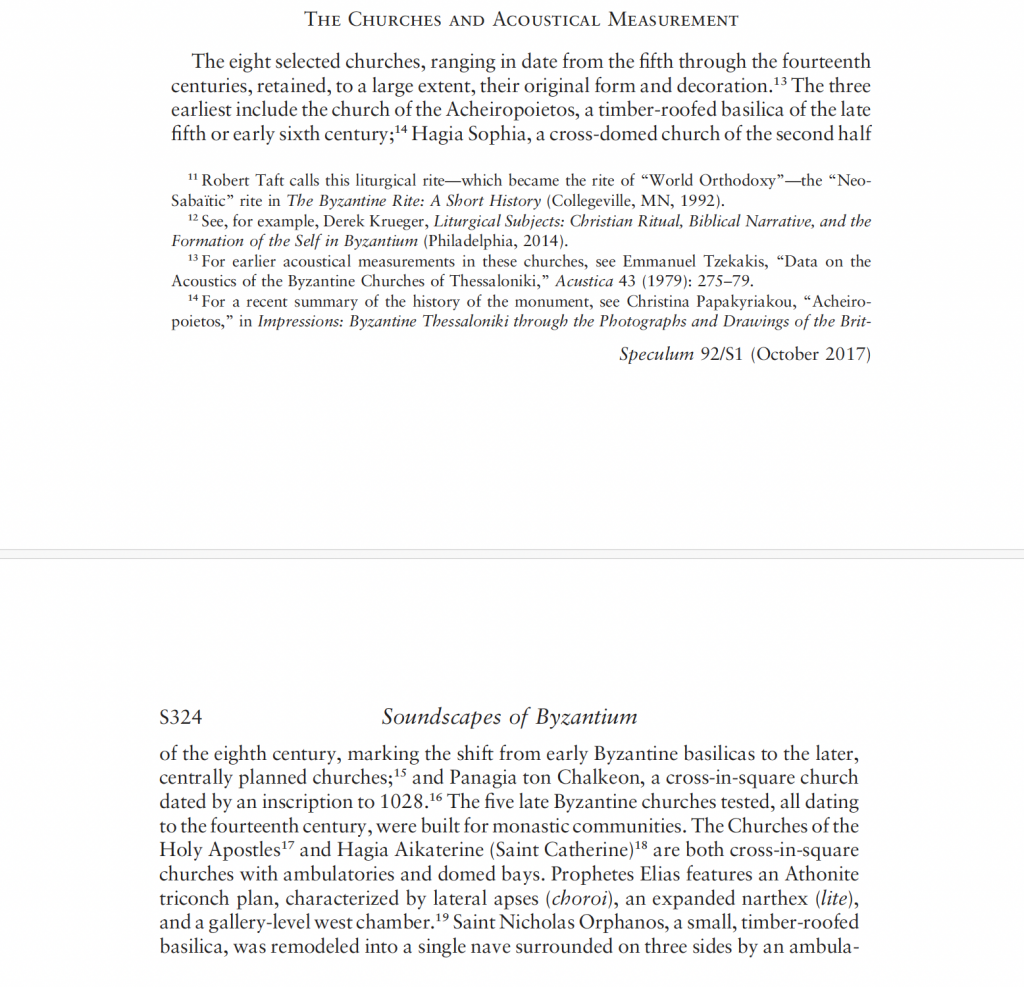Below are some screenshots of the text ‘Soundscapes of Byzantium’ and some notes that I took during and following the reading of this text. This text was, and still is, very important to me regarding not only my ideas for my prototype project but also for my dissertation.



Soundscapes of Byzantium : Notes
- An international collaborative effort that investigates Byzantine (500-1500AD) liturgical spaces through scientific methodology, Studying architectural forms and their progression; specifically in relation to the acoustics.
- John Kaminiates {church official and liturgical singer in Hagia Sophia) expresses how humans and angels weren’t just worshipping together on an ‘existential plane’ but actually singing together during the liturgy, probably due to the architecture of the Hagia Sophia; a centrally planned cathedral that moved on from previous architectural trends in Byzantine cathedrals of longitudinal basilicas.
- Musical manuscripts were the most direct witnesses to changes in the conception and experience of sound and music.
- Kalophonic chant and changes in Byzantine architectural forms seem to correspond chronilogically.
Index
- Sack of Thessaloniki (904) : refers to the capture of Thessaloniki by Leo of Tripoli, part of the Abbasid Caliphate
- Hagia Sophia (built around 500/600AD) : a centrally planned church with a basilica. Now a mosque in Istanbul (formerly Constantinople)
- Kalophonia/kalophonic chant (beautiful sound) : a genre of liturgical chant found in post 14th century. Florid and virtuosic and tended towards abstraction.
Leave a Reply